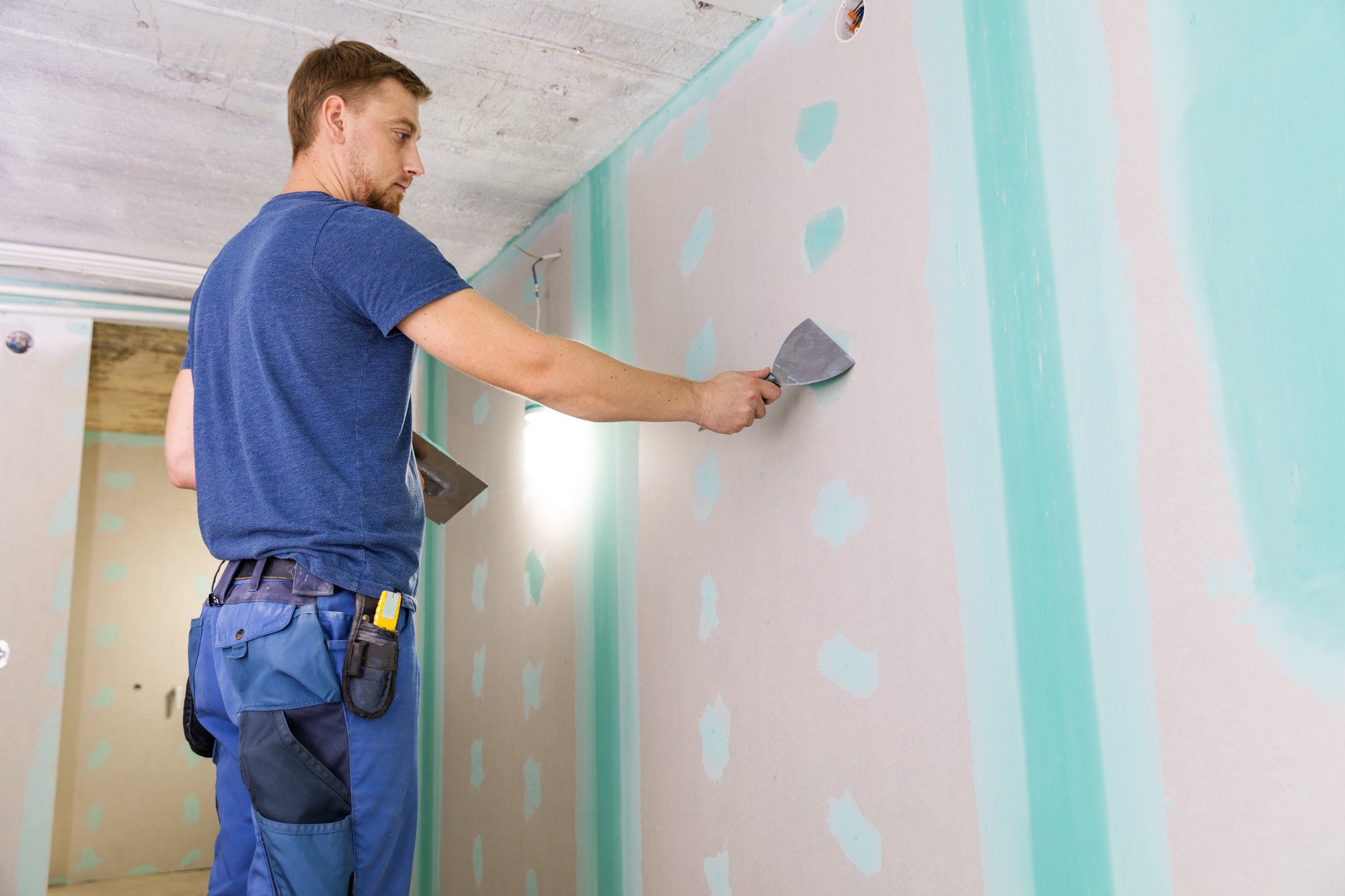How Stuffworks has Tips on DIY Drywall Installation

Drywall installation is usually costlier than wood framing; yet, some contractors might offer a reduced per-piece or per-hour rate, depending on the size of the job. Still, most DIY handymen would work for a fixed hourly rate to install drywall in a home. Drywall is the material used to cover the inside surfaces of the wall cavities. The term drywall was first used in the construction industry in the 1950s. The main purpose of drywall is to act as a sound barrier between the inside and outside elements, such as noise from speakers or from ceiling fans, heat from the stove or air conditioning, etc.
In order to perform drywall installation, you must have a few basic tools. Since this is not an electrical project, you will need a power drill, a screwdriver set, a measuring tape, and some nails or screws. These tools will ensure minimal damage to your walls should there be any unforeseen leaks. A typical DIY drywall installation does not take more than one day to complete. For more details about this service, click on this link.
Drywall installation can either be done by hand or with the use of a DIY kit. Most kits include a plaster trowel and drywall blade, drywall scissors, nails, screws, and finishing nails. You may also purchase these items separately. If you purchase the pieces separately, you should measure the areas that you want to install drywall panels before you place an order. Most kits come with the boards and drywall blade already drilled but if you purchase the parts separately, you should measure those spots yourself.
There are a few specialty tools that are commonly used in drywall installation. One of these tools is a propane torch. These torches have adjustable heat settings which make it easier for people who are not used to using this kind of tool. Another tool that is helpful in this field is a stud finder. These are also called "hot shoes" by professionals because of the way they work. Click for more info about this company.
Professionals often use a hydraulic wrench when doing drywall installation. They can control the force of the wrench by using either a hand lever or a foot lever. These professional diy tools are extremely helpful because they can help install a diy wood panel even if there are some nails missing. When it comes to the finishing process, there are only two things that you need to have handy. You will need a drill and a screwdriver.
So, I hope that I explained how DIY drywall installation works. We saw how simple it can be, but we also saw how dangerous it can be if you do it the wrong way. You really need to follow the instructions closely or you could ruin a piece of drywall. Always make sure that you feel comfortable doing any DIY project that you are not familiar with. If you are having problems, let's take a look at some of the resources I recommend to make DIY projects safer. Check out this related post to get more enlightened on the topic: https://en.wikipedia.org/wiki/Drywall.
